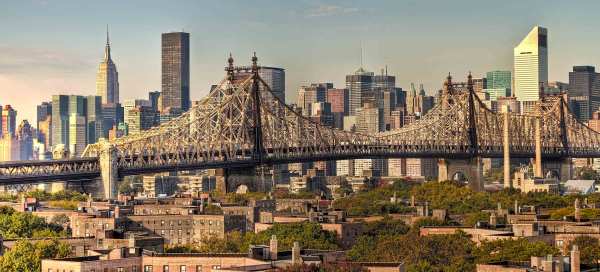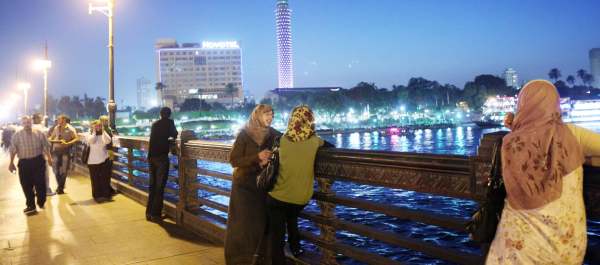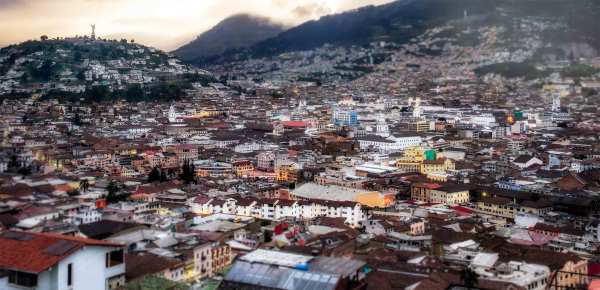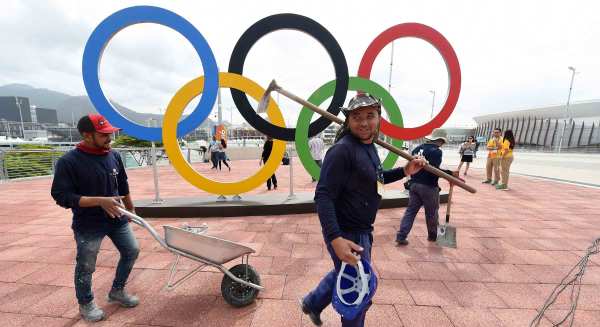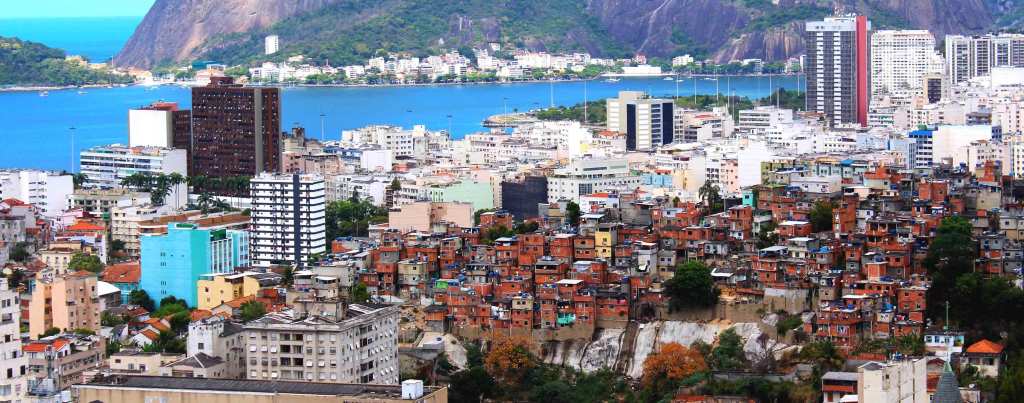
There’s a lot of buzz about cities these days—and for good reason. Although cities occupy only 2 percent of the world’s land, they account for 55 percent of the world’s population, 70 percent of the world’s economic activity, and around 70 percent of the world’s greenhouse gas emissions. And cities are only getting bigger, and growing at a faster pace, when it comes to both physical size and population.
Yet in America and in many places around the world, cities have greater income inequality than the rest of a nation. As the world continues to rapidly urbanize, inequality and the challenges associated with it will only become more severe—unless we can turn those challenges into opportunities for change.
As a global mega-trend, urbanization presents big opportunities for innovation, job creation, economic growth, sustainable development, and urban design. Indeed, there is a lot of interest in what the cities of tomorrow might look like, from smart cities to green cities to resilient cities. Less prominent but no less important is the ongoing conversation about how we can make sure tomorrow’s cities are just and inclusive ones—meaning cities that put people first, and put equity and social justice at the center of policy and design. Just and inclusive cities communicate to their residents: You belong here. In a just city, residents have the power and the resources to collectively shape, change, and plan their cities.
These aren’t just nice ideas. If cities are not inclusive and built for and by everyone, they will simply fail to thrive. As we have seen in cities across the US in the 20th century, top-down urban planning, metros built for cars and not people, and exclusionary zoning practices have led to severe disinvestment and racial and economic segregation, among other injustices. As the world urbanizes, we must ensure that everyone is included in the effort to make our cities thrive.
Accessibility Statement
- All videos produced by the Ford Foundation since 2020 include captions and downloadable transcripts. For videos where visuals require additional understanding, we offer audio-described versions.
- We are continuing to make videos produced prior to 2020 accessible.
- Videos from third-party sources (those not produced by the Ford Foundation) may not have captions, accessible transcripts, or audio descriptions.
- To improve accessibility beyond our site, we’ve created a free video accessibility WordPress plug-in.
Don Chen, Ford Foundation director of Equitable Development, explains what exactly is a just city and how we can make cities thrive by being more inclusive and representative of all residents.
Opportunities to advance social justice in cities
So how can we design, build, and maintain such cities? To help answer these questions, in March the Ford Foundation and the Organization for Economic Cooperation and Development (OECD) brought together mayors and leaders from 21 cities across the world to launch the Inclusive Growth in Cities Campaign. The campaign aims to increase awareness of rising inequality in cities, focus the debate on concrete solutions, and empower city and local governments to adopt policies that promote inclusive growth. Central to this campaign is the creation of a network of champion mayors who will work together to create a policy roadmap for inclusive growth in cities and advocate for an inclusion-oriented policy agenda. The campaign has now grown to include 47 cities and six supporting institutions: C40 Cities, Cities Alliance, Local Governments for Sustainability (ICLEI), the National League of Cities (NLC), United Cities and Local Governments (UCLG), and United Way Worldwide.
The supporting institutions will all have different roles in advancing the campaign, including knowledge transfer, expanding outreach, and developing tools to monitor and evaluate progress. Several supporting institutions will work to create a global platform that will allow mayors to see what’s working in their respective cities. This platform will highlight successful city initiatives that promote inclusion, and will be a tool for mayors to engage with each other and share new urban policy innovations. Given the numerous cross-city networks and initiatives that already exist, the platform is designed to support and build on existing collaborations while sharing best practices and connecting local, national, and global policy agendas.
While we know there is no one surefire way to create more equitable and inclusive cities, the Inclusive Growth in Cities Campaign is taking the important step of helping mayors share best practices and test what works in their varying contexts. The campaign also brings together leaders from philanthropy, the nonprofit sector, government, and civil society to innovate and brainstorm how to build a city that works for and respects every resident. This kind of collaboration is critical because it allows city leaders, policy makers, and stakeholders to consider a variety of perspectives, from those relevant to voters and municipal budgets, to those considering a longer time horizon or with a greater appetite for risk. Different and indeed multiple approaches will be necessary for mayors to successfully implement the campaign’s New York Proposal for Inclusive Growth in Cities, a roadmap that sets goals and provides policy tools for mayors to advance inclusive growth in cities.
By working collaboratively, the hope is that mayors will be able to better identify shared experiences and learn from each other’s successes. For example, Fatimetou Abdel Malik, mayor of Tevragh-Zeina, Mauritania, recognizes that environmental challenges resulting from climate change—such as expanding deserts and rising ocean tides—will most severely impact the poorest and historically marginalized residents of her city. Different environmental challenges in Curridabat, Costa Rica, will also threaten the city’s poorest residents, illustrating how climate change is inextricably linked to issues of inequality and social justice in cities across the world. In Santa Fe, Mayor Javier Gonzales has worked to increase access to art and cultural institutions for city residents from all walks of life—a program that might also work in a place like Dakar, Senegal, which also has a vibrant artistic heritage. And innovations like the IDNYC program—which provides a free city-issued ID card to all New York City residents—just might work in a city like Stockholm.
Accessibility Statement
- All videos produced by the Ford Foundation since 2020 include captions and downloadable transcripts. For videos where visuals require additional understanding, we offer audio-described versions.
- We are continuing to make videos produced prior to 2020 accessible.
- Videos from third-party sources (those not produced by the Ford Foundation) may not have captions, accessible transcripts, or audio descriptions.
- To improve accessibility beyond our site, we’ve created a free video accessibility WordPress plug-in.
A video from the OECD’s Inclusive Growth in Cities Campaign explaining how rising inequality in cities can be challenged through inclusive growth policies.
Toward a new urban agenda
This October, local officials, civil society, and member state governments will gather in Quito, Ecuador, for the Habitat III Conference. This is the third UN conference on issues of housing and sustainable development; they have occurred every 20 years since 1976. The upcoming Habitat III meeting is especially important because it will be the first time national governments and the international community collectively consider how to manage today’s rapid urbanization. And with local governments among the best positioned to make meaningful change, the Habitat III meeting provides an opportunity for cities to help realize the bold commitments of the Sustainable Development Goals and the Paris Climate Agreement. Ford’s grantees and partners are working to ensure that the Habitat III Conference’s final agreement, called the New Urban Agenda, is aimed squarely at solving today’s toughest global challenges, from economic inequality and climate change to violent extremism, food insecurity, and refugee resettlement. It’s important to get it right: The New Urban Agenda will determine what the international community says and does about urbanization and its effects for next 20 years, and will shape entire fields of urban policy and development practice.
Learn more about efforts to strengthen equity and inclusive growth in cities:
- C40 Cities added a “Social Equity and Climate Change” category to their annual awards program, as part of their participation in the Inclusive Growth in Cities Campaign. This new category recognizes measures that focus on alleviating social injustices related to climate change.
- The UCLG World Summit of Local and Regional Leaders, the National League of Cities Summit, and the C40 annual World Cities Summit are hosting convenings that will bring together mayors and other city leaders to discuss how to make just and inclusive cities a reality.
- On June 16, the Brookings Institution and the National League of Cities will host a discussion on rising inequality in cities and concrete ways to address it, featuring OECD secretary-general Ángel Gurría.
- On November 21, Paris mayor Anne Hidalgo will welcome the champion mayors for the second Inclusive Growth in Cities summit.
